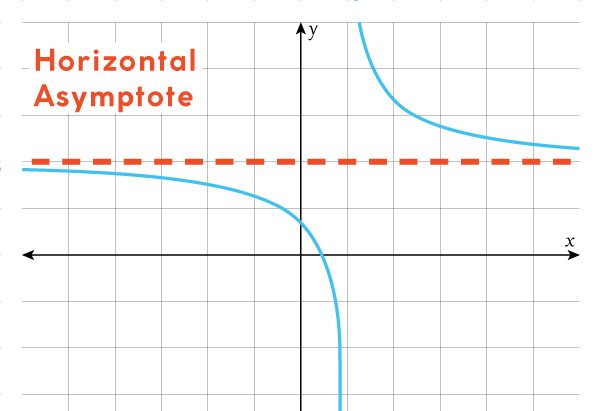Asymptote calculator is a free and easy-to-use tool. It helps you find the asymptotic curve for any given expression. With this tool, you can quickly understand how a function behaves as it approaches a line but never touches it. Whether you are a student or just curious, this calculator makes the process simple and fast.
You only need to enter the function, and the calculator will display the asymptotic curve in seconds. It saves you time by giving accurate results without manual calculations. This tool is perfect for solving complex equations and understanding horizontal, vertical, and oblique asymptotes.
Using the asymptote calculator is straightforward. It works online, so there is no need to download or install anything. Just input your function and get instant results. If you want to make learning math easier, this calculator is a helpful companion for quick and accurate solutions.
What is Asymptote Calculator?
Asymptote calculator is an online tool that helps you find the asymptotic graph for any function. It gives you quick and accurate results without manual work. If you want to understand how a function behaves near a specific line, this tool is perfect for you.
With Cuemath’s asymptote calculator, you can get the graph in just a few seconds. Simply enter your function, and the tool will show you the asymptotic curve instantly. It works for horizontal, vertical, and oblique asymptotes, making complex math easier.
You don’t need to be a math expert to use it. This calculator is designed to save you time and provide clear, easy-to-read results. Whether you are a student or a math enthusiast, this tool helps you explore functions effortlessly.

How to Use Asymptote Calculator?
Using the asymptote calculator is quick and simple. Follow these easy steps to find the asymptotic graph for any function accurately and efficiently:
- Enter the function: Start by typing the function in the input box. Make sure to use one variable like x for accurate results.
- Click “Compute”: After entering the function, press the “Compute” button. The calculator will quickly generate the asymptotic graph for the given function.
- Use “Reset”: If you want to analyze a different function, click the “Reset” button. This clears the fields and allows you to enter a new function.
By following these steps, you can effortlessly visualize how functions behave near their asymptotes. This tool saves time while providing clear and precise graphs for better understanding.
How to Find Asymptotes?
An asymptote is a line that a curve approaches but never touches. It shows the direction the curve moves as it extends to infinity. No matter how close they get, they never meet.
There are three types of asymptotes you should know:
- Horizontal asymptote – It shows the curve’s behavior as x moves far left or right.
- Vertical asymptote – This occurs when the function approaches infinity at specific x-values.
- Slant asymptote – It happens when the degree of the numerator is greater than the denominator.
Understanding these types helps you analyze how functions behave.
1.Horizontal asymptote:
Horizontal Asymptote
Finding the horizontal asymptote depends on the degrees of the polynomials. If the degrees of the numerator and denominator are the same, divide their leading coefficients. This gives you the asymptote.
- If the numerator’s degree is smaller than the denominator’s, the asymptote is y = 0. This means the curve gets closer to the x-axis.
- If the numerator’s degree is larger than the denominator’s, there is no horizontal asymptote.

Understanding these rules helps you find how a function behaves as x moves toward infinity.
2.Vertical Asymptote:
You can find the vertical asymptote by setting the denominator to zero. It happens when the denominator is zero, but the numerator is not. This shows where the function is undefined. Always check the denominator to locate the vertical asymptote in any rational function.
Solved Example:
Let’s find the asymptotes of the function f(x)=x+5x−3f(x) = \frac{x + 5}{x – 3}.
To find the vertical asymptote, set the denominator to zero:
x−3=0 ⟹ x=3x – 3 = 0 \implies x = 3
So, there is a vertical asymptote at x = 3.
Since the numerator and denominator are of the same degree, divide their coefficients. This gives the horizontal asymptote at y = 1.
You can also try the asymptote calculator for other functions:
- f(x)=x2+x+1x+1f(x) = \frac{x^2 + x + 1}{x + 1}
- f(x)=x+5x−6f(x) = \frac{x + 5}{x – 6}
3.Slant asymptote :
You find a slant asymptote when the degree of the numerator is one higher than the degree of the denominator. To calculate it, you divide the numerator by the denominator using long division or synthetic division. The quotient (without the remainder) gives the equation of the slant asymptote.
For example, if you have f(x)=x2+3x+2x−1f(x) = \frac{x^2 + 3x + 2}{x – 1}, dividing the polynomials gives the slant asymptote as y=x+4y = x + 4.
You won’t find slant asymptotes in functions where the numerator’s degree is less or equal to the denominator’s degree.

FAQs
How to find a non-linear asymptote?
Non-linear asymptotes appear when the degree of the numerator is two or more higher than the denominator. You find them by dividing the polynomials and using the quotient (without the remainder) as the equation of the asymptote.
How to find a slant/oblique asymptote?
You find a slant asymptote when the numerator’s degree is one higher than the denominator. Use long division or synthetic division to divide the polynomials. The quotient is the slant asymptote.
What are the 3 types of asymptotes?
The three types of asymptotes are:
- Horizontal asymptote – parallel to the x-axis.
- Vertical asymptote – parallel to the y-axis.
- Slant (oblique) asymptote – diagonal line.
How do you find your asymptote?
Identify the type of asymptote:
- For horizontal, compare the degrees of the numerator and denominator.
- For vertical, set the denominator equal to zero and solve.
- For slant, divide the polynomials if the numerator’s degree is one higher.
How do I calculate horizontal asymptotes?

: Compare the degrees of the numerator and denominator:
- If the numerator’s degree is less, the asymptote is y=0y = 0.
- If the degrees are equal, divide the leading coefficients.
- If the numerator’s degree is higher, there is no horizontal asymptote.
How to find vertical asymptotes in AP Calc?
To find vertical asymptotes, factor the denominator and set it equal to zero. Solve the equation. Points where the denominator becomes zero (and the numerator is not zero) are vertical asymptotes.
What is the slant asymptote calculator?
A slant asymptote calculator is an online tool that helps you find slant asymptotes. You enter the function, and the calculator uses long division to display the equation of the slant asymptote.
Conclusion
Understanding asymptotes is important when working with rational functions. You can find three types of asymptotes: horizontal, vertical, and slant. Each type gives you useful information about a function’s behavior. Knowing how to calculate them helps you understand how the graph moves and approaches specific lines.
By using an asymptote calculator, you can quickly find these lines. This saves you time and reduces the chance of mistakes. Whether you are solving simple equations or preparing for exams, this tool is helpful.
You should practice finding asymptotes using different methods. This will improve your math skills and boost your confidence. Understanding these concepts is useful for advanced math and calculus.
With the right approach, finding asymptotes becomes easy. Use calculators for quick answers, but also learn the manual methods. This combination helps you solve problems faster and more accurately. Keep practicing, and you will master asymptotes in no time.

